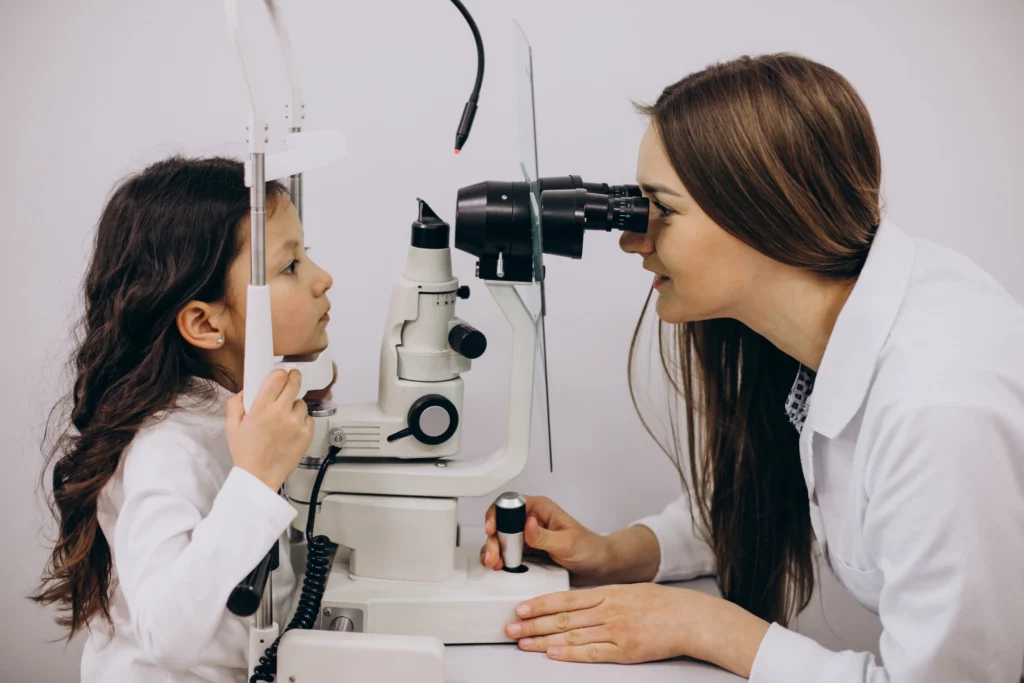
Ophthalmology Scribe
In the past, ophthalmologists were able to dedicate a majority of their time to providing comprehensive eye care to patients. However, with the widespread adoption of Electronic Health Records (EHRs), ophthalmologists find themselves juggling the dual responsibilities of patient care and maintaining accurate patient records. Recent studies indicate that a significant portion of an ophthalmologist’s time during patient encounters is dedicated to updating electronic health records and ensuring compliance standards are met. According to a study published in JAMA Ophthalmology, nearly one-third of an ophthalmologist’s time with patients is consumed by inputting data into EHR systems. This substantial time allocation to EHRs comes at the expense of providing direct patient care. In this blog post, we will explore the detrimental impact of time pressures on patient care and how the use of scribes can offer a solution.
Is EHR Usage Consuming Excessive Time for Ophthalmologists?
Research reveals that ophthalmologists typically spend approximately eleven minutes examining a patient. Out of this time, three minutes are dedicated to entering patient data into EHRs, and four and a half minutes are spent interacting with patients. Additionally, ophthalmologists are observed spending nearly three and a half hours each day on EHR-related tasks while working at the clinic. Of this time, a little over two hours are consumed during patient visits, leaving the remaining hour and a half for off-clinic hours. These findings underscore the fact that EHR usage places a considerable burden on ophthalmologists, diverting a significant amount of their time away from direct patient interaction. Ophthalmologists are expected to engage in face-to-face interactions with patients, gather information, make diagnoses, develop care plans, and build patient relationships. Consequently, these time pressures can have adverse effects on the quality of patient care.
Can Scribes Reduce the Time Spent on EHR Documentation?
Scribes have emerged as a viable solution to enhance both patient and provider satisfaction while substantially reducing the time spent on EHR documentation. A study conducted at the Oregon Health and Science University Casey Eye Institute’s ophthalmology clinic aimed to evaluate the impact of scribes on documentation efficiency in ophthalmology clinics. The results demonstrated that the integration of scribes led to increased documentation efficiency, resulting in reduced overall documentation time and decreased physician note editing
Can Ophthalmologists See More Patients with Scribes?
To assess the efficiency improvements brought about by scribes in ophthalmology practices, a study was conducted by two ophthalmologists at UT Health San Antonio from January 2018 to April 2018. The study highlighted that employing scribes for documentation support can enhance efficiency, enabling ophthalmologists to accommodate a larger number of patients or allocate time to other activities such as teaching and research. This efficiency is achieved because of the use of scribes who shorten the average duration of clinic sessions and patient encounters. As a consequence, additional time becomes available within the workday to see more patients or engage in research and teaching activities.
What Role Does an Virtual Ophthalmology Scribe Play?
A medical scribe serves as a valuable asset to a busy ophthalmic practice, assisting with administrative aspects of patient care. Ophthalmic virtual scribes offer real-time documentation support during ophthalmic examinations, operating from a remote location. They virtually accompany the physician in the examination room, transcribing patient history, physical examinations, procedures, and patient care plans as conducted by the ophthalmologist. They also aid in retrieving relevant test results or prior-visit information essential to the encounter. In essence, ophthalmic scribe manage all electronic medical records and clinical charting remotely, allowing ophthalmologists to fully focus on their patients during examinations.
In Conclusion, it is evident that electronic health records impose a significant burden on busy ophthalmologists, limiting their time for patient interactions during office visits. Balancing patient care with comprehensive patient record keeping is a formidable challenge, and one that can impact the quality of care provided. The utilization of scribes in ophthalmology clinics can significantly alleviate this documentation burden, enabling ophthalmologists to dedicate more time to patient care. If you find that EHRs are adding to your administrative workload, it may be time to consider taking the assistance of ophthalmology virtual scribes to lighten the load.
